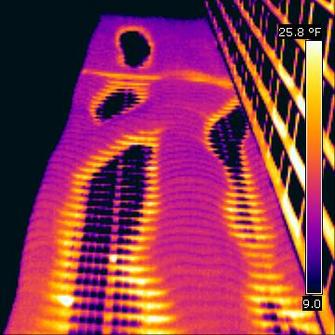-
July 08, 2016
Goodbye and thank you! -
June 16, 2016
Desert dust increases harmful marine bacteria -
June 09, 2016
The greening of Vancouver -
June 03, 2016
Phosphorescent concrete could light the way home -
May 27, 2016
Surfing the polar front: how black carbon reach... -
May 13, 2016
The great Amazon experiment, or, how beer-maker... -
April 29, 2016
Simple ideas for going green now -
April 22, 2016
A very beautiful and unusual animal in danger -
April 08, 2016
The potential of rooftop solar energy: 40% of t... -
April 02, 2016
Fecal fungi may lead to cheaper biofuel -
March 25, 2016
More of everything: increased consumption means... -
March 18, 2016
Vanishing rice paddies and biodiversity loss -
March 04, 2016
Science teachers could be obstacle to climate c... -
February 25, 2016
Understanding climate change skeptics -
February 12, 2016
So you want to make methanol? Start with ruthe... -
January 29, 2016
Greenland ice sheets losing ability to absorb m... -
January 22, 2016
The power of poop: revolutionizing wastewater t... -
January 15, 2016
When good intentions don't mix: designing polic... -
January 08, 2016
Amazon resilience buoyed by diversity -
December 18, 2015
Beyond the headlines: clarifying the connection... -
December 10, 2015
Where fuel goes, water cannot follow: impact of... -
December 02, 2015
The many stories of climate change -
November 25, 2015
Solving the silicon swelling problem in batteries -
November 18, 2015
Making climate change local: how to motivate ci... -
November 11, 2015
Short-term stability and long-term collapse: ex... -
October 29, 2015
Equity or inertia: how emissions sharing philos... -
October 15, 2015
Climate change in the classroom: visualizing gl... -
October 07, 2015
Radiation or human intrusion: which factor is t... -
September 30, 2015
Sequester in numbers: zooplankton migration tra... -
September 18, 2015
Falling to the competition: how climate change ... -
September 09, 2015
Carving a path towards carbon pricing -
September 02, 2015
Saving seeds and genes to save lives -
August 20, 2015
The story of a cave and climate change -
August 05, 2015
Human evolution: the discipline that can save t... -
July 31, 2015
Leave endangered bustards wild – why capt... -
July 22, 2015
Plastic rock: the new anthropogenic marker in t... -
July 09, 2015
Human evolution: the discipline that can save t... -
June 30, 2015
Surface matters: using earth-abundant materials... -
June 24, 2015
Methane-munching microbes limit global warming -
June 17, 2015
Braving the Amazon to understand climate change -
June 03, 2015
Coral's complex resilience to global warming -
May 27, 2015
Back in black: record efficiency for black-sili... -
May 20, 2015
Repeating the history of economic expansion in ... -
May 13, 2015
Commuting Kites - conservation success or urban... -
May 01, 2015
The search for artificial photosynthesis: every... -
April 22, 2015
The road to recovery: a survey of the aftermath... -
April 16, 2015
The organic side of fracking -
April 01, 2015
A matter of scale: the cultural and environment... -
March 27, 2015
eDNA - the next big thing in conservation monit... -
February 25, 2015
The Biofuel Controversy -
February 11, 2015
Out of the frying pan and into the fire? Transl... -
February 04, 2015
How to Keep the Lights On When the Fossil Fuels... -
January 21, 2015
Not All Renewables Are Created Equal -
November 14, 2014
The Green Marketing Façade -
September 14, 2014
Corruption - the greatest obstacle to elephant ... -
August 20, 2014
Unique and Alone On the EDGE of Existence -
August 09, 2014
Detrimental dissent – impacts of uncertai... -
July 25, 2014
Antarctic Tipping Points - the fate of the Amun... -
November 28, 2013
How bats make decisions -
November 22, 2013
Pest pathways and tree disease: How can we save... -
October 25, 2013
Legalising trade in endangered species products... -
September 09, 2013
Plant Pioneers - Assisting The Migration Of Cli... -
August 06, 2013
Citizen Science Takes Flight: Benefits and Chal... -
July 25, 2013
Water World
« Prev « Prev Next » Next »






 I'm excited to put up a guest post by Emily Rhode this week! Emily is freelance writer and blogger whose training and passions lie at the intersection of science and education. She has worked as an outdoor environmental educator, a science teacher, and a professional communicator and trainer. You can follow her on Twitter at @riseandsci.
I'm excited to put up a guest post by Emily Rhode this week! Emily is freelance writer and blogger whose training and passions lie at the intersection of science and education. She has worked as an outdoor environmental educator, a science teacher, and a professional communicator and trainer. You can follow her on Twitter at @riseandsci.





















